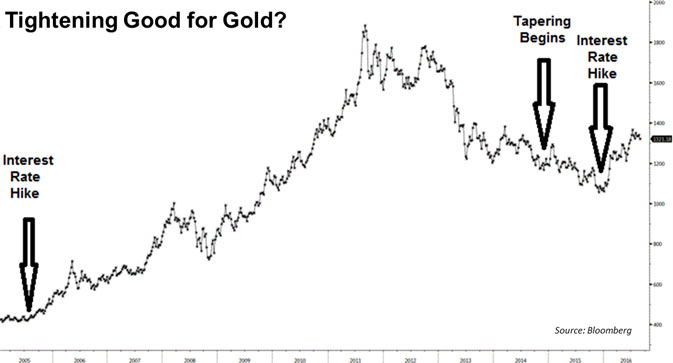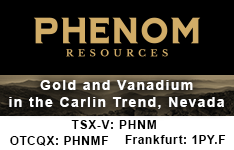Note: in the first article in this series, Adrian Day discusses impending tapering by the Federal Reserve and its potential effect on U.S. markets. The second article discusses the macroeconomic environment in Europe, China, and emerging markets.
Resources: Corrections from previous moves continue
There have been significant corrections in many resources after recent market moves. Lumber is down 72% from its May peak; iron ore is down almost 50% in the past two months. Other than aluminum, up 14%, most metals were down this past quarter, on average nearly 5%. China buys about 50% of most commodities, so a slowing Chinese economy, particularly the property market, will hurt resources.
Energy prices have been the leaders in the past quarter, and year, with U.K. natural gas up 324% year to date, while oil is up over 50% YTD, and coal anywhere from 34% to 238%, depending on the type and location. Restrictions on production of traditional energy sources were always going to have a result; someone (I forget who) commented a few years ago that “we will run out of supply before we run out of demand” and that is happening sooner than expected.
Tight supplies mean continued high prices, though as we have discussed before, there is no shortage of spare capacity in oil from places that are not trying to eliminate carbon fuels (Russia and Saudi Arabia, for example), so oil prices in particular may retreat, particularly if the Chinese and global economies slow. And there are plentiful gas shales in many countries available if fracking is permitted.
Cautious on uranium for now
Nuclear power is clearly essential if economies are to produce sufficient power without emissions, and more people are realizing this after the frenzy to ban nuclear power a decade ago. As with oil, there is no shortage of potential supply, at least in the near term; both Kazakhstan, the largest producing country, and Cameco, the largest private producer, have deliberately withheld supplies to boost the price. This is what has made me cautious on uranium.
The demand has also been artificial: some uranium developers have been raising equity and using the proceeds to buy uranium in the market, while the largest impact on demand in recent months has been the new Sprott Physical Uranium Trust with its “At The Market” equity raise feature. This means that whenever the trust is trading at a premium, Sprott can sell new units in the market and use the proceeds to buy physical uranium.
This they have been doing aggressively, raising the size of the program two weeks ago by $1 billion to $1.3 billion. (For context, the market cap of the Trust ahead of the announcement was less than $1 billion.) Uranium prices jumped 40% in the past month, the result of this buying. In the last week, however, the Trust has been less active in issuing stock and buying uranium, and the uranium price has plunged, by the largest weekly decline since January 2008. been slipping. This demonstrates clearly how much the near-term price of the mineral is dependent on the Trust’s buying. Like all similar attempts to boost prices, whether short squeezes or attempts to corner markets, this makes me nervous. The optimistic view is that the recent price surge will push utilities towards making long-term contracts.
Longer term, the outlook for uranium is very bullish as China continues its nuclear power build, and countries from Japan to Germany realize, a decade after Fukushima, that they need nuclear power as a solution to this summer’s power problems. For now, however, we are standing aside.
Why has not gold responded more?
The big question on gold investors’ minds, for good reason, is why gold is not higher given the unprecedented money printing and rising inflation. The second question is when will it change?
To some extent, gold has simply been in a long consolidation after the extraordinary move early last year, when gold jumped over 30% from its end-March low to early-August high. That kind of move— in four months—is extraordinary for an asset that is intended as a hedge and an insurance. Gold is not supposed to do that. Bitcoin…Tesla…perhaps, but not gold! It has been a long consolidation, as month- by-month more and more people give up, while natural gold buyers feel there is no rush to invest.
Gold is down nearly 8% year to date, and down again in September, which is disheartening. But we should put that in context: gold was up 25% last year, so the pullback is less than one-third of the previous year’s move up. The current gold bull market started at the end of 2015, when gold hit $1,051. Gold cycles, both up and down, tend to be long; indeed the shortest have been the last two, in the 1970s and from 2001 to 2011. And it is not unusual for gold to have mid-cycle corrections, often caused by an extraneous shock. In the 1970s, gold dropped over 40% in a correction lasting 20 months. In 2008’s credit crisis, it fell nearly 30% in eight months. So far, this pullback has taken 15% off gold’s peak price and has lasted just 13 months, well within norms for mid-cycle corrections. I would suggest that gold bottomed in March at $1,685, meaning the correction lasted less than seven months.
What is holding back gold?
There have been fundamental factors holding back gold, and three are most important. One is the dollar, which has moved up over the past several months as the “cleanest shirt in the laundry basket.” However low U.S. interest rates might be, they remain meaningfully higher than those offered by other major world currencies.
The second factor is that the stock market and other assets—including cryptocurrencies—have been doing well. So long as the stock market moves up, investors believe that gold investments can wait.
The third major factor holding back gold is the Federal Reserve’s constant threat to start tapering. The Fed has a history of talking more than doing, and, for reasons beyond me, the institution still has credibility. It is not only gold that has not responded to money printing and inflation, but other assets such as TIPs, commodities; none is acting the way one might expect, all seem to buy the Fed’s narrative.

Fed talk hurts more than the walk
The fact is that many times in the past gold moved down in advance of Federal Reserve tightening, responding to growing talk, but turned when it actually started to tighten. This is “buy the rumor, sell the news,” only in reverse. Gold acts this way because all too often when the Fed does actually start to act, it is too little too late.
The Fed starting raising rates in August 2005, and again in December 2015, after months of discussion. In both cases, gold bottomed the same month rates started being hiked. Similarly in May 2013, when the Fed started talking about tapering, gold slid for the next several months. It was just before Christmas that we saw the first rate hike, and gold bottomed almost to the day.
The recent action has been frustratingly modest and volatile. However, the longer gold meanders in its current trading range, the faster and stronger the eventual move will be. In the meantime, gold investors can accumulate at prices that will appear very good in a few years’ time. They should not wait too long.
Gold stocks at historical lows
The major miners (per the XAU [Philadelphia Gold and Silver Index]) more than doubled in the end-March to early-August period last year, so they too have experienced a long consolidation. The stocks are now extraordinarily inexpensive, with the senior and intermediate gold companies trading in the lowest 25 percentile of their historical valuations, and more or less the lowest price-to-free cash flow ever. Given the price of gold…given the strong cash flows…given the improved balance sheets (the XAU is net cash positive today)…given the improved discipline among top mining companies, today’s low valuations are a gift.
We all know that gold stocks are volatile. It can be discouraging when a new stock you buy falls 10% in the first week you own it. But that volatility works both ways, and once gold starts to move up convincingly, then the gold stocks will respond very strongly. It is worth noting that flows into gold ETFs and other investment vehicles are very procyclical, so we can expect flows to increase as the gold price moves up.
Seniors and juniors inexpensive
Although the major miners will be the first to move when gold turns, as well as the more certain to move, the exploration stocks are now at very low levels; we may yet see lower levels if tax-loss selling continues into year-end. This period will prove, I believe, to be an extraordinary buying opportunity for the juniors and explorers as well.
Silver has been far weaker than gold over the past couple of months. Part of this is due to seasonal weakness as electronic and jewelry manufacturers—which combined account for about half of 2021 demand—take a summer break. The resurgence we frequently see in September, as jewelers buy gold and silver for the upcoming holidays, has not happened. In addition, we have seen investors who bought into the “silver squeeze” story get exhausted and sell as the price has continued to decline.
We believe gold and silver both represent very strong buying opportunities and gold in particular has the best risk-reward profile. We also are buying selective resources, notably copper and agriculture, where the supply side of the equation is as compelling as the demand, but are near-term cautious as China’s economy slows, particularly of specific resources where the near-term supply situation is not as strong.
Overall, we are increasingly concerned about the possibility of a near-term pullback in global equities markets, particularly given the overvaluation, as the Federal Reserve and other major central banks move, hesitatingly, towards some form of tightening. The global economy and debt situation are not secure enough to withstand too much tightening. This is temporary, and we are confident that they, and particularly the Fed, will start easing again within a year or so, favoring combatting economic weakness over fighting inflation. This will be very positive for gold and silver, which we believe are close to strong moves up.
Adrian Day, London-born and a graduate of the London School of Economics, is the founder of Adrian Day Asset Management. His latest book is "Investing in Resources: How to Profit from the Outsized Potential and Avoid the Risks."
Disclosure:
1) Statements and opinions expressed are the opinions of author and not of Streetwise Reports or its officers. The author is wholly responsible for the validity of the statements. Streetwise Reports was not involved in any aspect of the article preparation. The author was not paid by Streetwise Reports LLC for this article. Streetwise Reports was not paid by the author to publish or syndicate this article.
2) This article does not constitute investment advice. Each reader is encouraged to consult with his or her individual financial professional and any action a reader takes as a result of information presented here is his or her own responsibility. By opening this page, each reader accepts and agrees to Streetwise Reports' terms of use and full legal disclaimer. This article is not a solicitation for investment. Streetwise Reports does not render general or specific investment advice and the information on Streetwise Reports should not be considered a recommendation to buy or sell any security. Streetwise Reports does not endorse or recommend the business, products, services or securities of any company mentioned on Streetwise Reports.
3) From time to time, Streetwise Reports LLC and its directors, officers, employees or members of their families, as well as persons interviewed for articles and interviews on the site, may have a long or short position in securities mentioned. Directors, officers, employees or members of their immediate families are prohibited from making purchases and/or sales of those securities in the open market or otherwise from the time of the decision to publish an article until three business days after the publication of the article. The foregoing prohibition does not apply to articles that in substance only restate previously published company releases.
Adrian Day Asset Management Disclosure:
Adrian Day Asset Management (“ADAM”) is an SEC-registered investment adviser located in San Juan, Puerto Rico. ADAM and its representatives are in compliance with the current filing requirements imposed upon SEC-registered investment advisers by those states in which ADAM maintains clients. ADAM may only transact business in those states in which it is registered or qualifies for an exemption or exclusion from registration requirements. (Note: Global Strategic Management, our legal name, is registered, or qualified to accept clients from all states and territories, including the District of Columbia.) A direct communication by ADAM with a prospective client shall be conducted by a representative that is either registered or qualifies for an exemption or exclusion from registration in the state where the prospective client resides. For information pertaining to the registration status of ADAM, please contact the SEC or the state securities regulators for those states in which ADAM maintains a notice filing. A copy of ADAM’s current written disclosure statement discussing ADAM’s business operations, services, and fees is available from ADAM upon written request. (Note, all clients receive this document prior to opening and account and are offered it annually.) ADAM does not make any representations or warranties as to the accuracy, timeliness, suitability, completeness, or relevance of any information prepared by any unaffiliated third party and takes no responsibility therefor. All such information is provided solely for convenience purposes only and all users thereof should be guided accordingly. Past performance may not be indicative of future results. Therefore, there can be no assurance (and no current or prospective client should assume) that future performance of any specific investment or investment strategy (including the investments and/or investment strategies recommended or undertaken by ADAM) made reference to directly or indirectly by ADAM will (i) be suitable or profitable for a client or prospective client’s investment portfolio or (ii) equal the corresponding indicated historical performance level(s). Different types of investments involve varying degrees of risk. Historical performance results for investment indices and/or categories generally do not reflect the deduction of transaction and/or custodial charges, the deduction of an investment management fee, or the impact of taxes. (Note, any performance number provided for Adrian Day Asset Management accounts is after the deduction of all transaction costs and fees.) The material contained herein is provided for informational purposes only and does not constitute an offer to buy or sell or a solicitation of an offer to buy or sell any option or any other security or other financial instruments. Certain content provided herein may contain a discussion of, and/or provide access to, ADAM’s positions and/or recommendations as of a specific prior date. Due to various factors, including changing market conditions, such discussion may no longer be reflective of current position(s) and/or recommendation(s). Moreover, no client or prospective client should assume that any such discussion serves as the receipt of, or a substitute for, personalized advice from ADAM, or from any other investment professional. ADAM is neither an attorney nor an accountant, and no portion of the content provided herein should be interpreted as legal, accounting, or tax advice. Rankings and/or recognition by unaffiliated rating services and/or publications should not be construed by a client or prospective client as a guarantee that he/she will experience a certain level of results if ADAM is engaged, or continues to be engaged, to provide investment advisory services, nor should it be construed as a current or past endorsement of ADAM by any of its clients. Rankings published by magazines, and others, generally base their selections exclusively on information prepared and/or submitted by the recognized adviser.































































